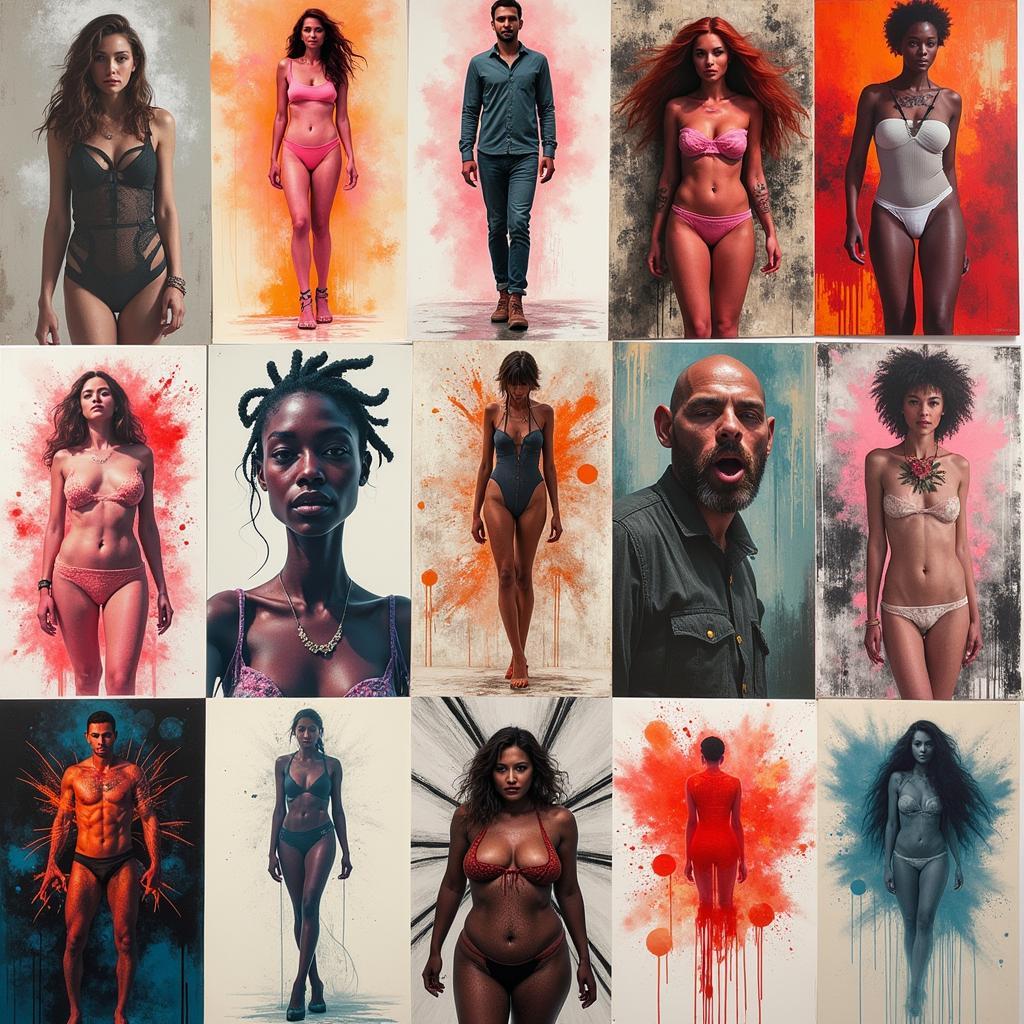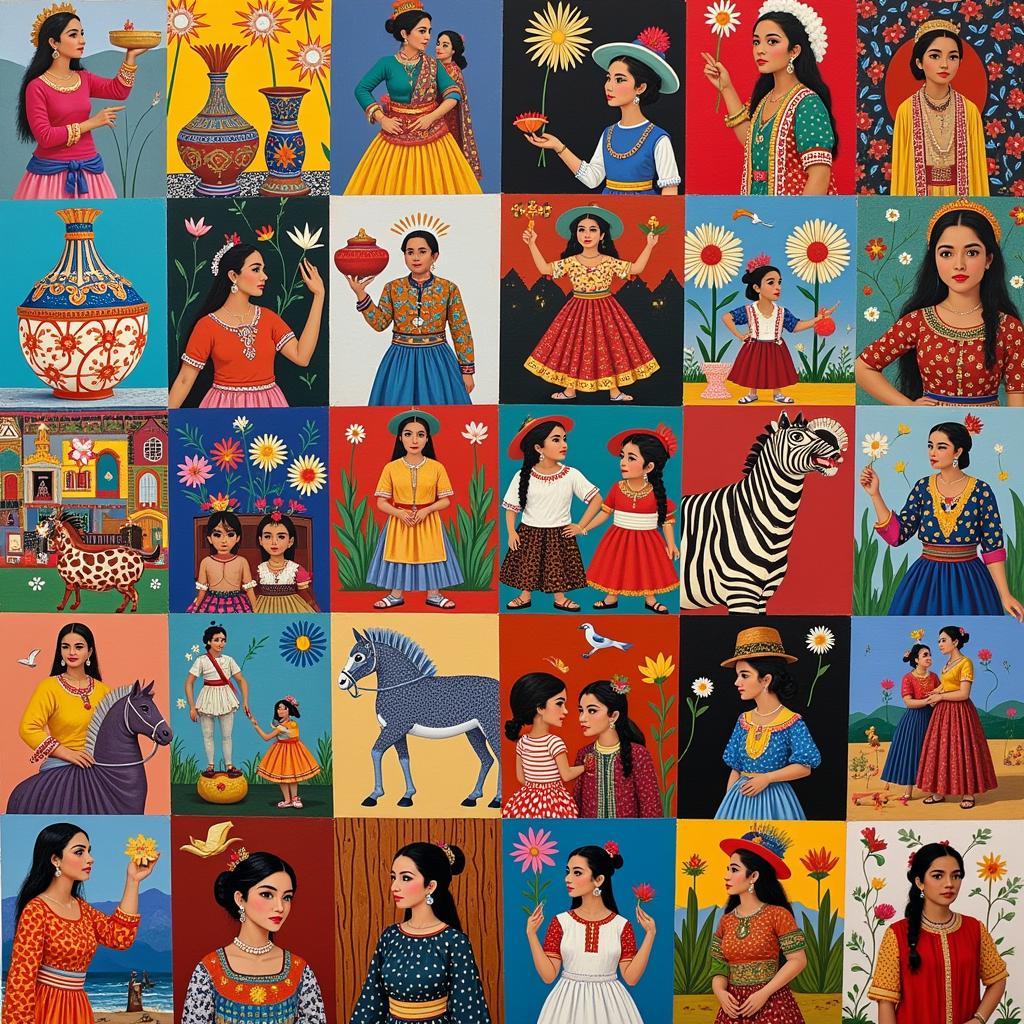Exploring the Diverse Functions of Art
Art, in its myriad forms, has captivated humanity since the dawn of time. But what are the Functions Of Art? Why do we create, and why are we so drawn to it? This exploration delves into the multifaceted roles art plays in our lives, from personal expression to social commentary, and from aesthetic pleasure to spiritual enlightenment. You’ll discover how art shapes our world, reflects our values, and connects us across time and cultures. Let’s embark on this journey to understand the power and purpose behind artistic creation.
How Does Art Function in Society?
Art serves as a powerful mirror reflecting the society that creates it. It captures the prevailing beliefs, values, and anxieties of a particular time and place. From the grandeur of ancient Egyptian pyramids, expressions of power and divine connection, to the vibrant street art of modern cities, echoing contemporary social issues, art provides invaluable insights into the human condition. Art can challenge the status quo, spark dialogue, and inspire social change. Think about the impact of patriotic American art, often evoking strong feelings of national pride and identity. Art can also be a powerful tool for documentation, preserving cultural heritage and historical narratives for future generations.
The Personal Functions of Art: A Journey of Self-Discovery
Art allows us to express ourselves in ways words often cannot. It provides a canvas for our emotions, thoughts, and experiences, enabling us to explore our inner landscapes and make sense of the world around us. Creating art can be therapeutic, offering a release from stress and a means of self-discovery. This personal connection is evident in practices like the Unit Circle art project, where mathematical concepts are transformed into visual expressions. Whether through painting, sculpting, writing, or any other artistic medium, engaging with art can foster self-awareness, boost confidence, and enhance our overall well-being.
Art as a Form of Communication: Bridging Cultures and Generations
Art transcends language barriers, communicating emotions, ideas, and stories across cultures and generations. A single painting, a piece of music, or a performance can evoke a universal understanding, fostering empathy and connection between people from different backgrounds. Consider how art from the American Revolution tells stories of courage and resilience, resonating with audiences even today. Through art, we can gain a deeper appreciation for the diversity of human experience and build bridges of understanding across geographical and cultural divides.
Art’s Aesthetic Function: The Pursuit of Beauty and Pleasure
Art has the power to move us, to inspire awe and wonder. It can evoke a range of emotions, from joy and serenity to sadness and contemplation. The aesthetic function of art lies in its ability to create beauty, harmony, and visual pleasure. This pursuit of aesthetic excellence is evident in various art forms, from the intricate details of a Renaissance painting to the graceful movements of a ballet dancer. This function of art enriches our lives by providing moments of beauty and inspiration in a sometimes chaotic world. Just as the art in LDS temples evokes a sense of reverence and spirituality, different forms of art can elicit unique aesthetic responses.
The Economic Functions of Art: A Creative Industry
The art world encompasses a vast and dynamic ecosystem, supporting artists, galleries, museums, and a range of related industries. Art has a significant economic impact, generating revenue through sales, exhibitions, and tourism. The performing arts, for example, require specialized services like performing arts insurance, highlighting the economic interconnectedness of the creative sector. Furthermore, art can contribute to the economic development of communities, attracting investment, creating jobs, and fostering cultural tourism.
What are the Social Functions of Art?
Beyond individual expression and aesthetic pleasure, art plays vital social functions. It can serve as a platform for social commentary, challenging societal norms and sparking conversations about important issues. Art can raise awareness about social injustices, promote dialogue, and inspire positive change. Think of how protest songs have historically been used to express dissent and mobilize social movements.
Conclusion: The Enduring Power of Art
The functions of art are as diverse as the art itself. From personal expression to social commentary, from aesthetic pleasure to economic impact, art plays a vital role in shaping our world and enriching our lives. Understanding these diverse functions allows us to appreciate the enduring power of art and its profound influence on individuals, communities, and societies across time and cultures.
FAQ: Frequently Asked Questions about the Functions of Art
- What is the primary function of art? There is no single primary function. Art serves multiple purposes, from personal expression to social commentary and aesthetic pleasure.
- How does art contribute to society? Art reflects societal values, sparks dialogue, inspires change, and preserves cultural heritage.
- Can art be therapeutic? Yes, creating and engaging with art can be a powerful tool for self-discovery, emotional expression, and stress relief.
- How does art impact the economy? Art generates revenue through sales, exhibitions, and tourism, supporting a vast network of artists and related industries.
- What is the role of art in communication? Art transcends language barriers, communicating emotions and ideas across cultures and generations.
For any further assistance, please contact us at Phone: 02462573573, Email: [email protected] or visit our address: Savico Megamall, 7-9 Đ. Nguyễn Văn Linh, Gia Thụy, Long Biên, Hà Nội 10000, Việt Nam. We have a 24/7 customer service team.


